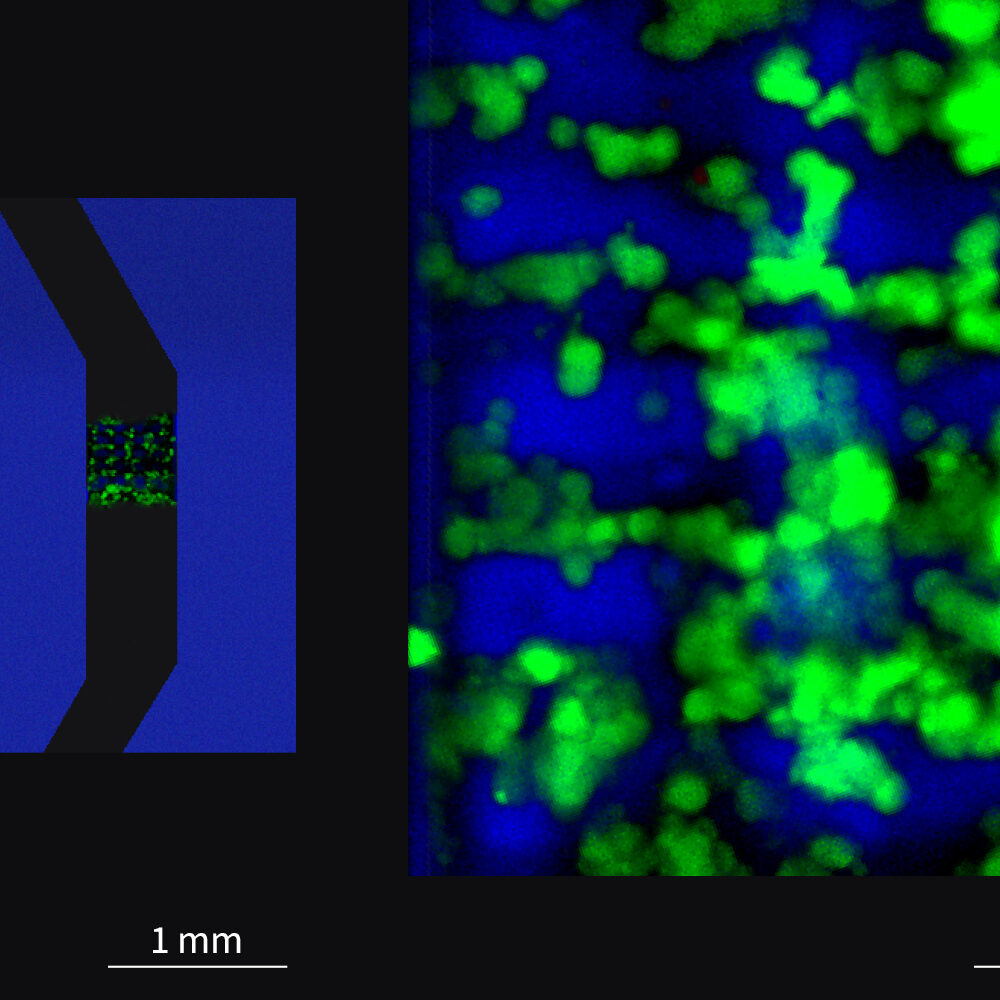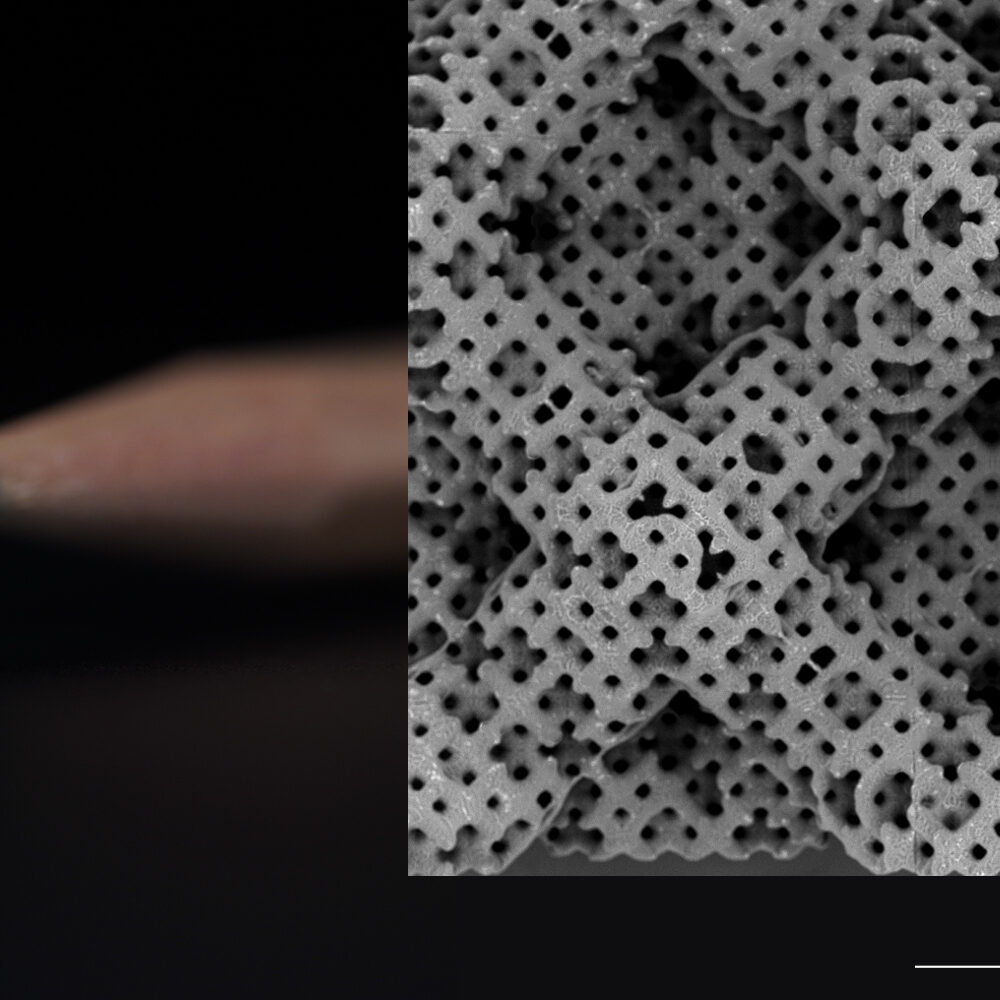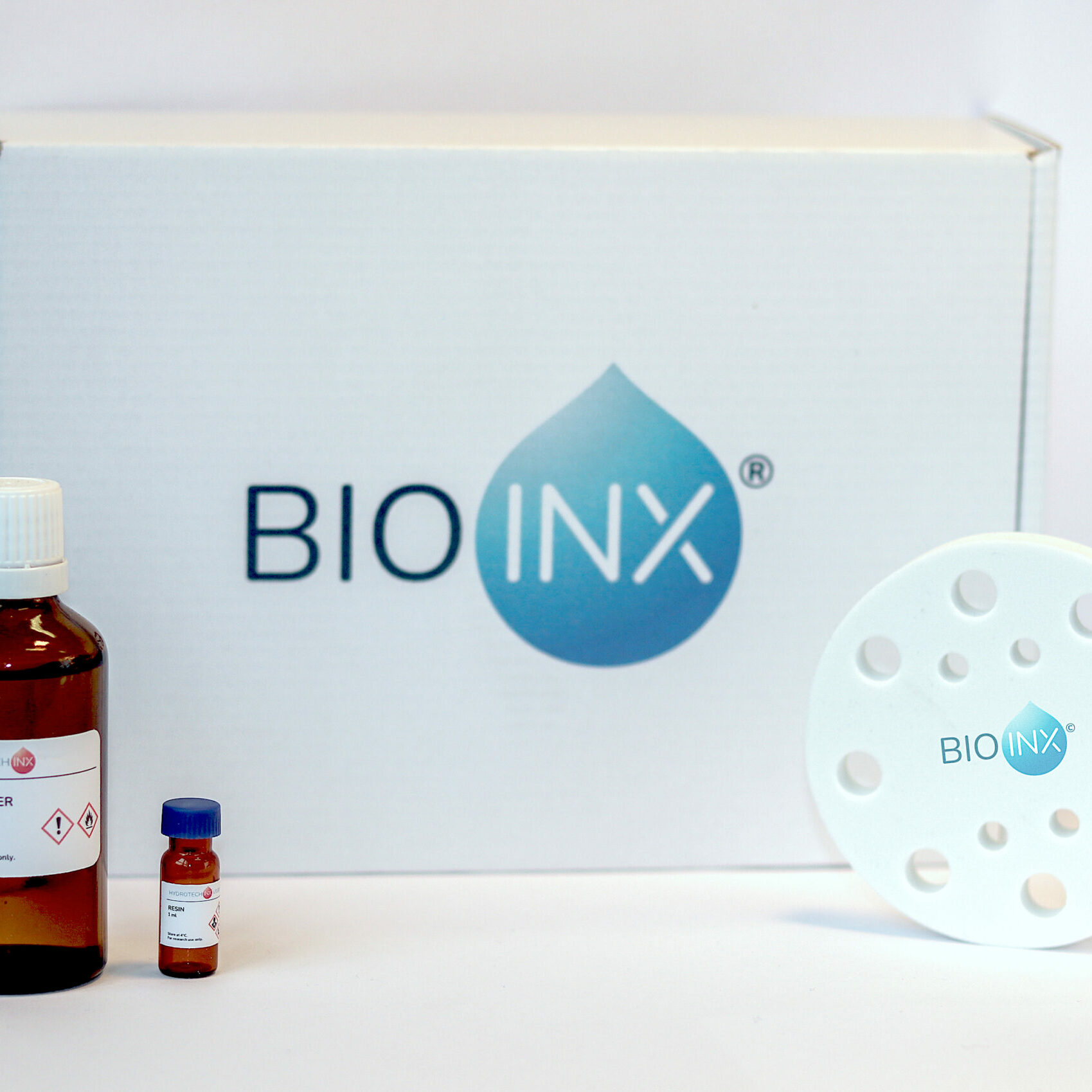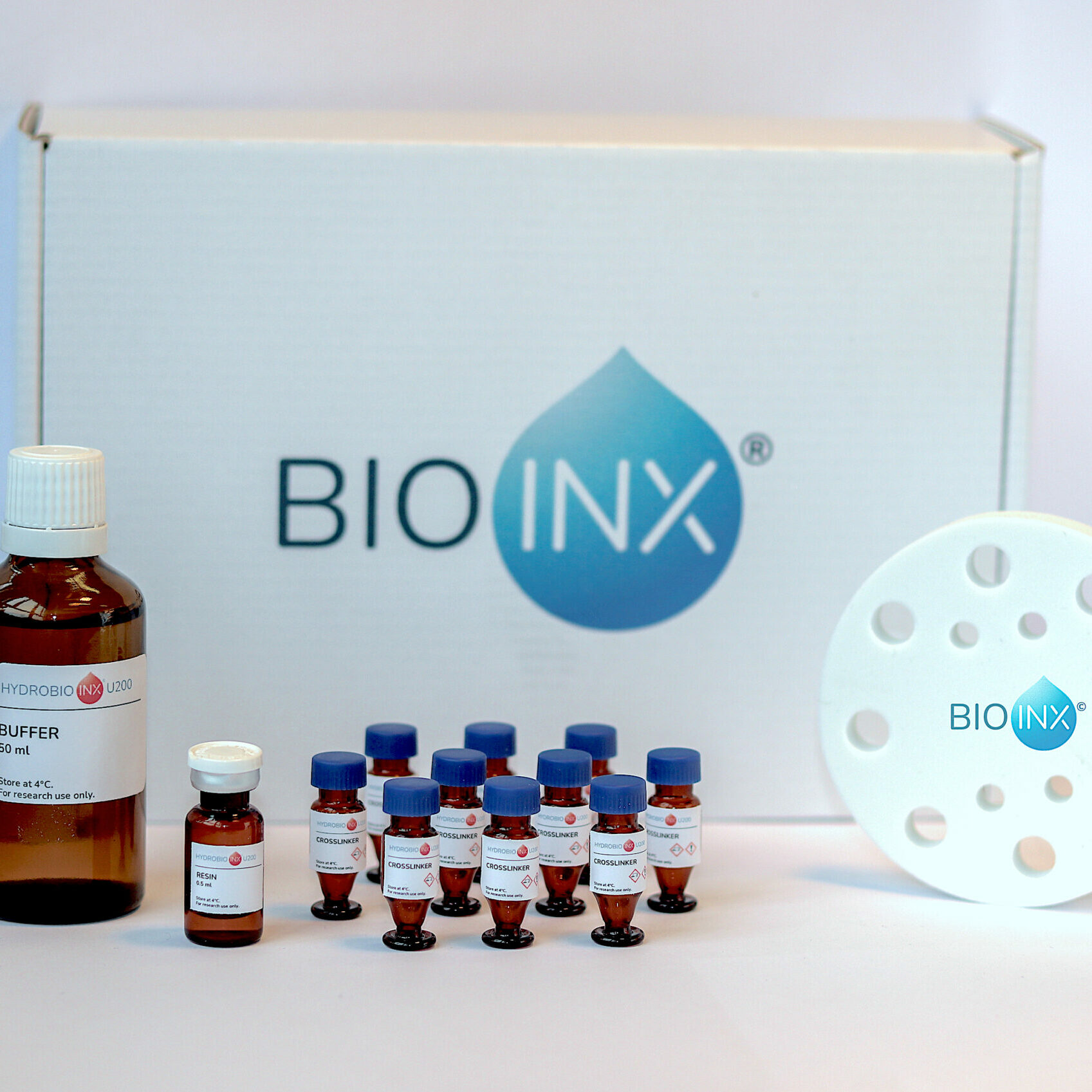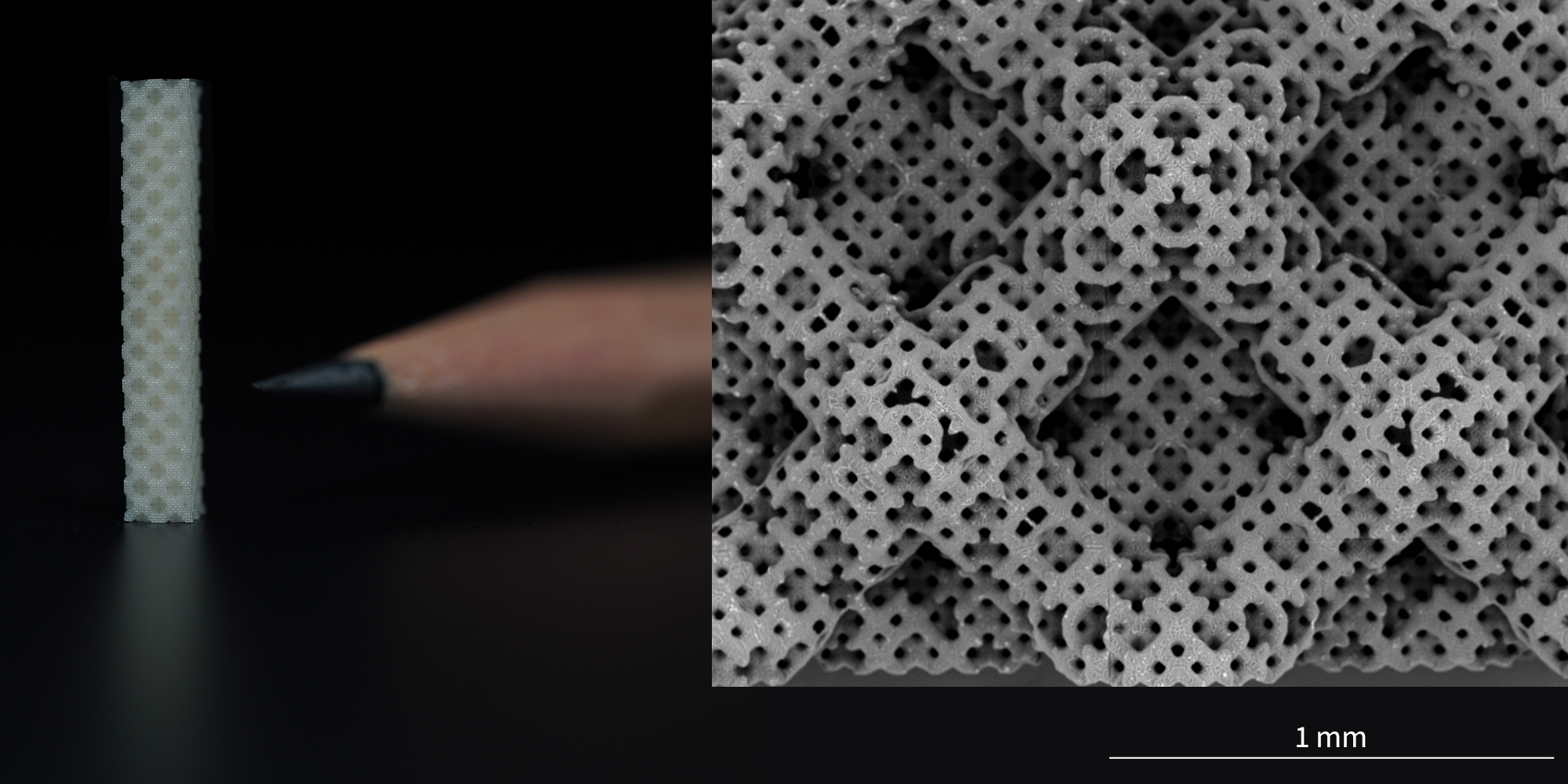
12 June 2023
New Era of Bioprinting
Set of Bioinks Allows Complex High-Resolution Bio-Structures from Micro- to Meso-Scale
Cooperation of UpNano and BIO INX yields further advancement: Two-stage 3D-printing of organ-on-chip devices with encapsulated live cells is possible.
Vienna, Austria, 12 June, 2023 – The launch of a new biocompatible hydrogel resin marks the begin of a new era in bioprinting. The novel resin allows 2-photon polymerization (2PP) 3D-printing from micro- to meso-scale at highest resolution. The reactivity and easy processing of the material permits the fabrication of complex and versatile organ- or lab-on-chip designs. This new bioink called Hydrotech INX© U200 has been developed by the material specialist BIO INX (Belgium) in collaboration with UpNano (Austria), leading manufacturer of 2PP 3D-printers. The results of this collaboration now allow to add an additional layer of complexity to a bioprinted construct by the smart combination of multiple biocompatible materials. In this respect versatile cancer-on-chip models are possible by combining the newly launched resin with cell-encapsulating gelatin-based hydrogel Hydrobio INX© U200, which is the first commercially available high resolution bio ink that offers cell interactivity.
The ever-increasing possibilities of bioprinting are nurtured by a continuous advancement of 3D-bioprinting technologies. In this, 2-photon polymerization (2PP) 3D-printing excels as it covers the entire spectrum of biological dimensions with one printing technology: sub-micrometer resolution combined with the capability of printing objects at centimeter dimensions (macro-scale). This impressive potential has now been advanced by a set of bioinks jointly developed by BIO INX, 3D-bioprinting material specialist, and UpNano, leading manufacturer of 2PP 3D-printers.
Macrostructures with Micrometer-Precision
With the release of Hydrotech INX© U200 the two companies demonstrate their success in developing a versatile material that enables 2PP 3D-printing of macrostructures with micrometer-precision. The material has been certified according to ISO 10993-5, confirming its excellent biocompatibility. Jasper Van Hoorick, CEO of BIO INX, comments: “In combination with the fact that the material is completely bio-inert, its robust characteristics make Hydrotech INX© U200 the ideal choice for organ-on-chip applications.”
However, in order to benefit from the full potential of the novel bioink, a state-of-the-art high-resolution 3D printer is required. Here, UpNano’s NanoOne 2PP-printer range offers a very suitable choice. The NanoOne is the fastest high-resolution 3D printing system on the market. It is based on multiphoton lithography and combines the precision of 2PP with an unmatched throughput of up to 450 mm³ per hour. On top of that, the NanoOne Bio is specifically adapted for printing with living cells and under sterile conditions – and thus a congenial partner for the most challenging task in bioprinting: fabrication of complex 3D scaffolds for cell cultures whilst embedding living cells into these structures in one simple set-up.
Complex Design – Simple Production
“Combining these steps can easily be done,” explains Denise Hirner, COO and co-founder of UpNano, “by using the NanoOne Bio in combination with the two bioinks Hydrotech INX© U200 for the inert structure and Hydrobio INX© U200 for living cells in 3 dimensions.” In fact, whilst the Hydrotech-bioink is perfectly optimized for the high-resolution fabrication of bioinert but biocompatible microstructures, the Hydrobio-bioink is a water-soluble natural hydrogel that allows the direct transfer of cell cultures from 2D-culture plates into complex 3D-structures. It has been specifically developed for the encapsulation of multiple cell types thereby allowing the generation of complex 3D-microtissues.
Production of lab-on-a-chip devices will now be possible not only with an unprecedented precision, but also with directly embedded living cells – thereby saving time and improving the significance of the results. Surface structures resembling natural tissues (biomimetic structures) such as liver lobules or intestinal villi can now be created inside a microfluidic channel on a chip, and living cells at various densities can subsequently be seeded directly onto them.
By combining their respective competences in material development and 2PP 3D-printing, BIO INX and UpNano are pushing the possibilities of bioprinting to a new level and will continue doing so.
About UpNano GmbH
UpNano is a Vienna (Austria) based high-tech company with the focus on development, manufacturing, and commercialization of high-resolution 3D-printers. The systems are based on 2-photon-polymerization which offer industry-leading speed and resolution below 0.2 µm. UpNano is committed to providing customers with a holistic package of hardware, software, and optimized printing materials, for the fabrication of polymeric microparts as well as the unique possibility of bioprinting in a native cell environment. Using UpNano’s cutting-edge technology makes it possible to print objects with sizes ranging from the sub-micrometer to the centimeter range and up to 40 mm in height – within times and precision never achieved before.
Contact UpNano
Denise Hirner
Chief Operating Officer, Founder
Modecenterstrasse 22, D36
1030 Vienna, Austria
T +43 (0)1 8901 652
M +43 (0)676 3943 728
E
W www.upnano.atwww.linkedin.com/company/upnano
twitter.com/upnano_gmbh
Copy Editing & Distribution
PR&D – Public Relations for Research & Education
Dr. Barbara Bauder
Kollersteig 68
3400 Klosterneuburg, Austria
M +43 (0)664 1576 350
E
W http://www.prd.at/
About BIO INX
BIO INX is a start-up focusing on the development and commercialization of biomaterials for 3D-bioprinting applications. It is leading manufacturer of high-resolution resins for bioprinting. The company is committed to providing innovative solutions that enable researchers and clinicians to create advanced biomedical structures. BIO INX offers a range of products that are optimized for various bioprinting techniques, including extrusion, inkjet, DLP and two-photon polymerization. By offering a unique material portfolio with a diverse range of material properties, the applications become nearly limitless: the bioinks can be applied for various tissue types with applications in regenerative medicine and drug and cosmetics screening.
Contact BIO INX
Jasper Van Hoorick
CEO
Tech Lane 66,
9052 Zwijnaarde, Belgium
M +32499169894
E
W https://www.bioinx.com
L www.linkedin.com/company/BIO INX
T @BIO_INX


